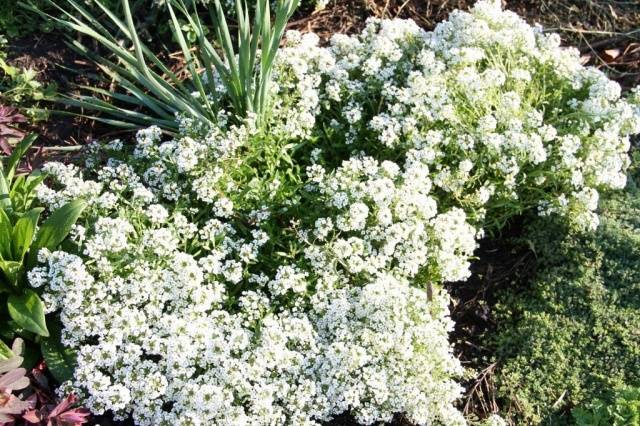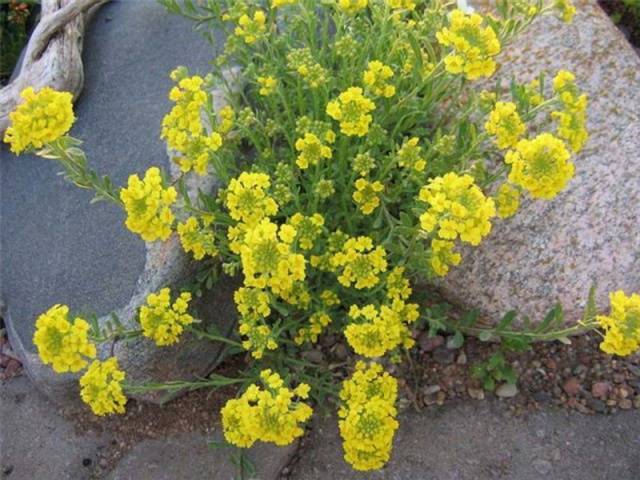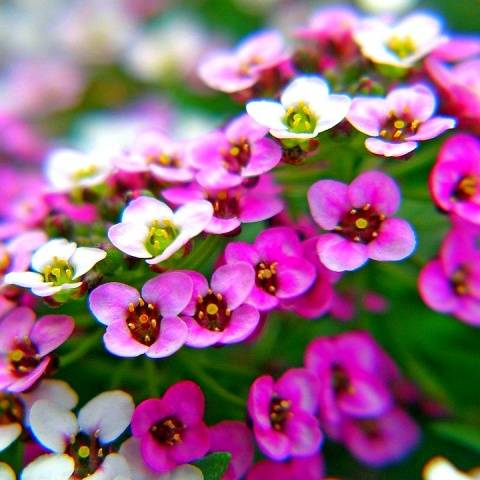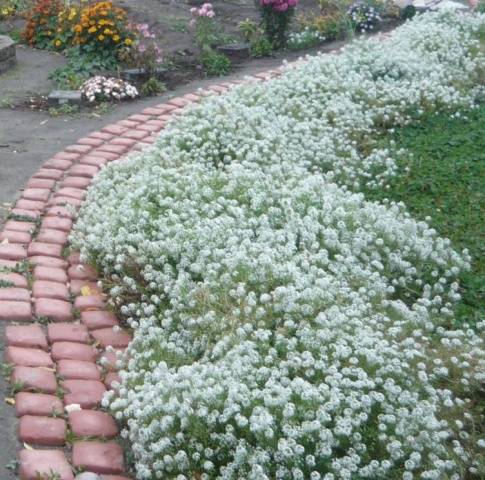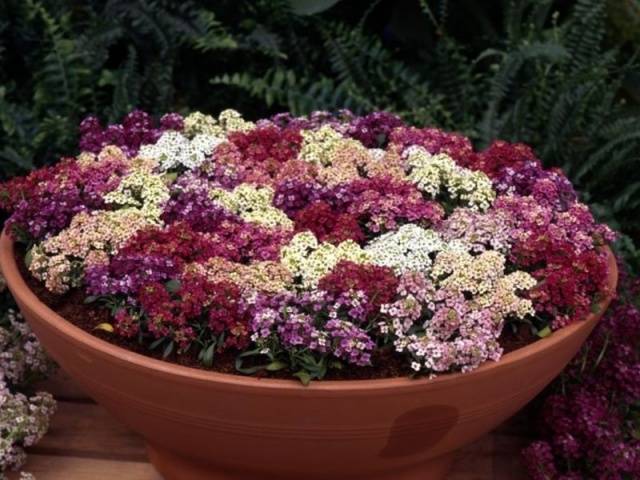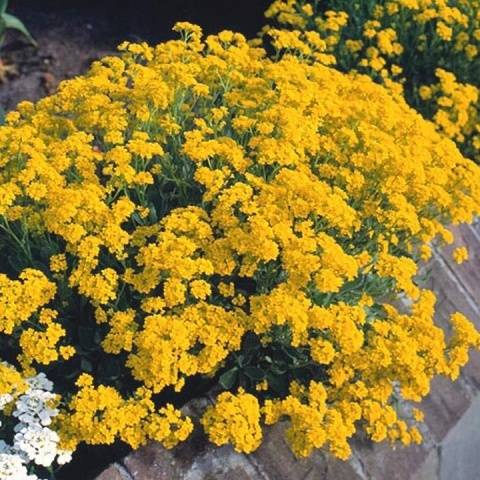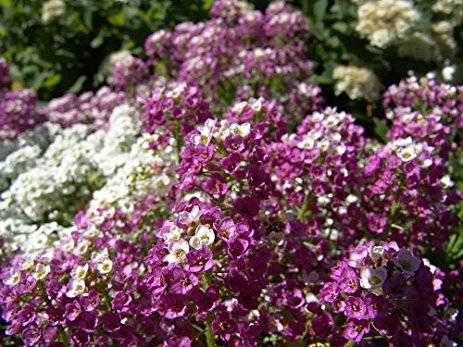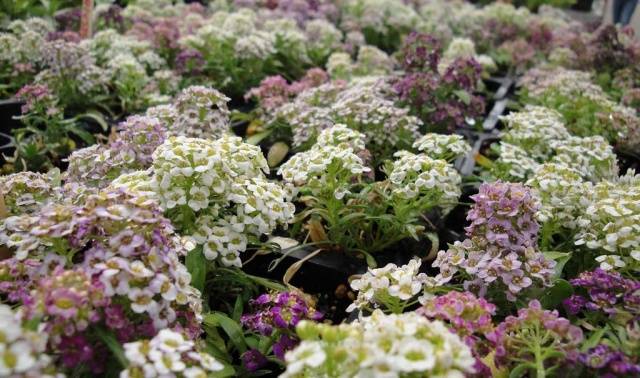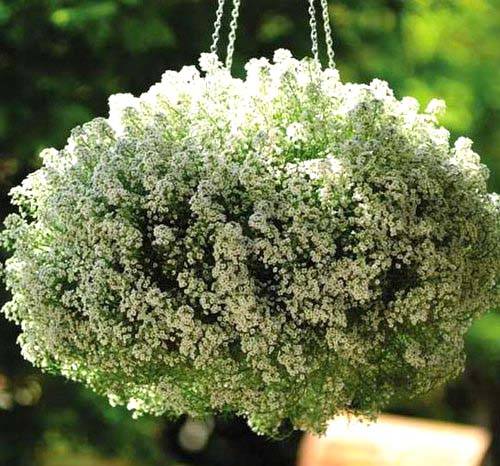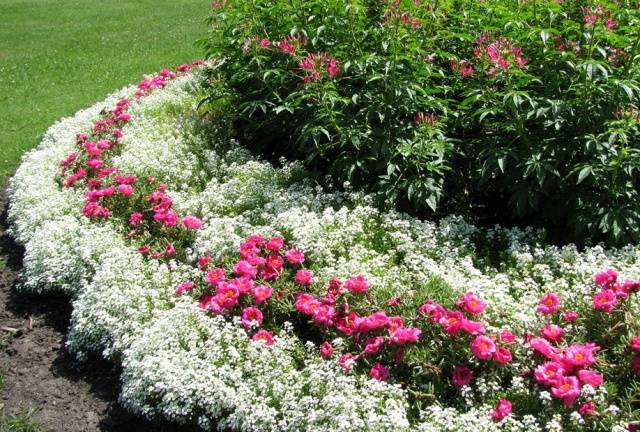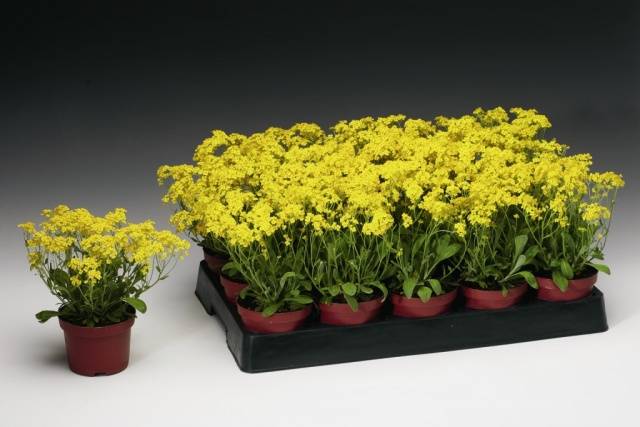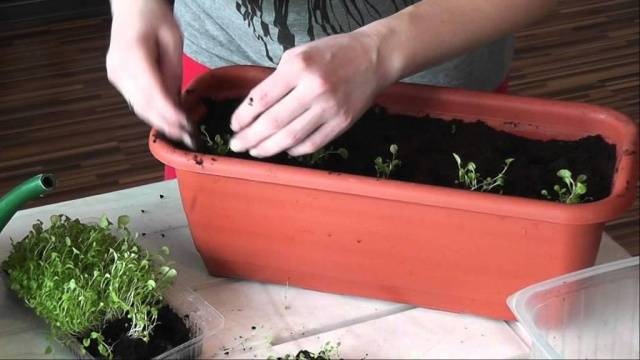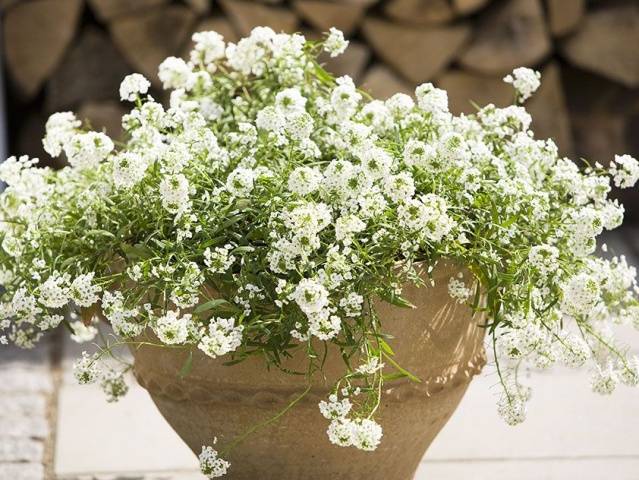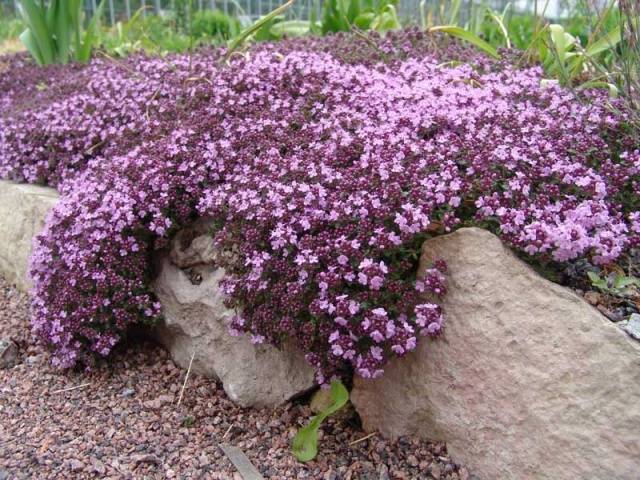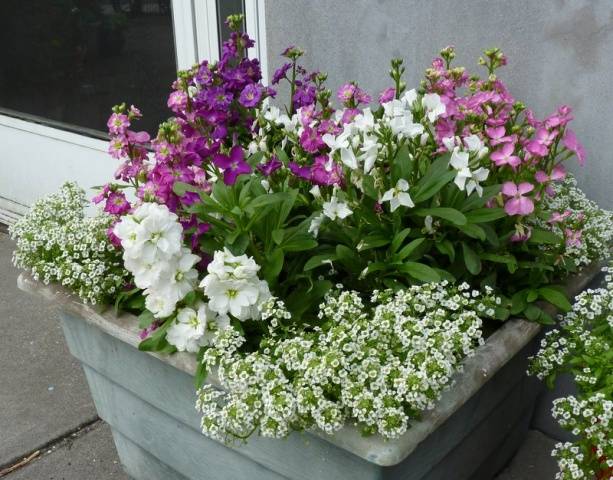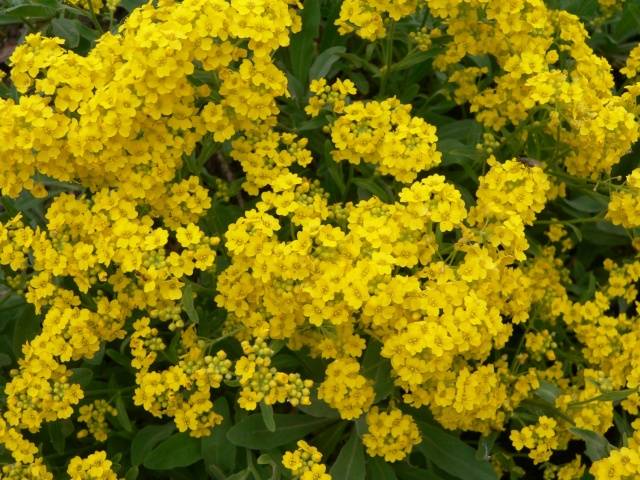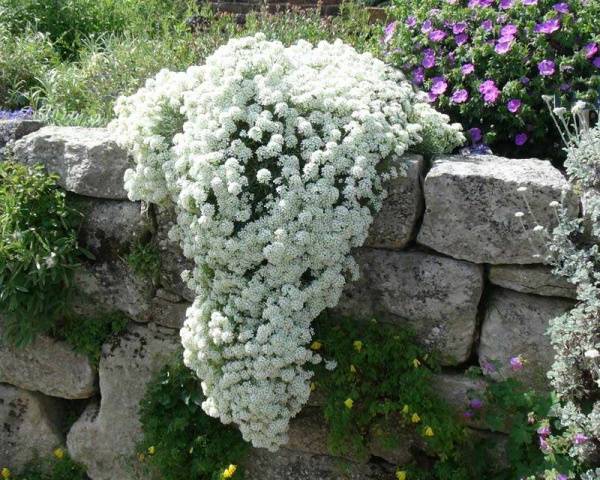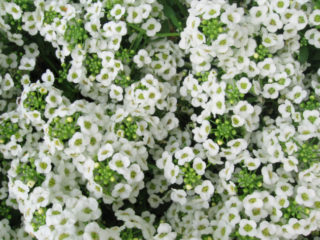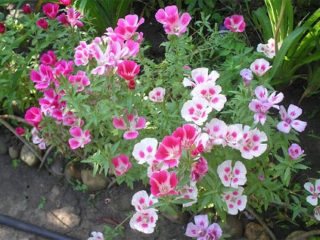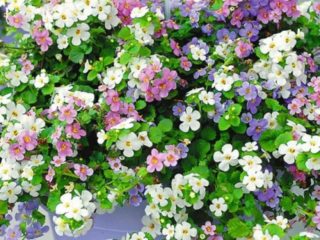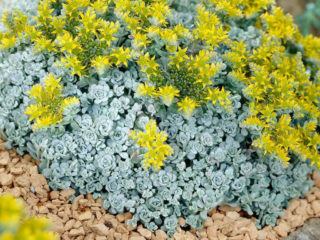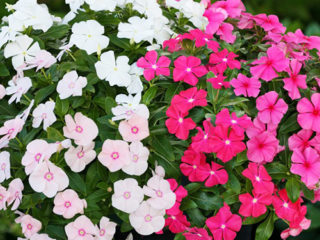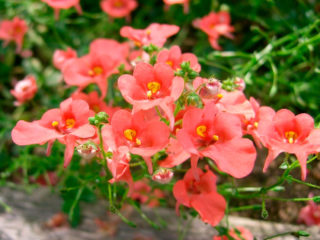Content
In the world of flowers, there are commercially viable varieties that are in demand anytime, anywhere and are consistently in high demand among florists and landscape designers. Alyssum is just such a flower - a ground cover plant with a very abundant flowering and unpretentious character. Alyssum's shades can be very diverse, its bushes are compact and capable of growing rapidly, covering a large area of land, another advantage of this plant is the honey aroma that envelops the bushes. There is nothing difficult in growing alissum, because the plant perfectly adapts to almost any climate.
How to grow alissum from seeds, when to plant its seedlings in the ground and other planting methods will be discussed in this article.
Characteristics of colors
In nature, a plant called alyssum grows in Asia, North Africa and Europe. The flower belongs to the Cruciferous (or Cabbage) family and has about one hundred varieties.
Characteristic features of lobularia:
- stunted ground cover type plant;
- alissums grow in height from 8 to 40 cm;
- shoots strongly branching, semi-lignified at the base;
- leaves are small, obovate, slightly pubescent;
- inflorescences are small, collected in a brush;
- the color of flowers can be any (white, yellow, pink, red, lilac or purple);
- Alyssum begins to bloom at the end of May, and ends in late autumn;
- fruit - a pod with seeds, the germination of which lasts for three years;
- the plant belongs to honey plants, therefore it attracts bees and other insects well;
- in nature, lobularia is a perennial, at home this plant can be grown both as an annual and as a perennial crop;
- the flower tolerates low temperatures (up to -1 degrees);
- some varieties of alyssum can winter in a flower bed even without shelter, while the flowers retain their greenery all year round.
Variety selection
In the flower beds of the country, you can find both the original varieties of alissum (growing in nature) and those that were bred by breeders. Also, plants with a perennial and one-year life cycle are cultivated on equal terms. Photos of flowers and their brief description will help to deal with varieties:
- Snow Carpet - an annual variety of ground cover alissum, reaches a height of 8 cm. The bushes are spreading, compact, covered with a large number of green leaves and snow-white small flowers.
- Aphrodite - also an annual undersized lobularia, growing up to ten centimeters in height. The color of flowers can be red, purple or pink.
- Golden Wave - a plant with a long life cycle. It is a compact bushes up to 20 cm high, covered with silvery leaves, which are covered with a fine downy. This variety blooms in bright yellow. Blooms in the second year after planting.
- Purple queen is an annual. The leaves of this alissum are long, silvery-green. Inflorescences along the edge are painted in a rich purple hue, inside - lighter or white.
- Palette - another undersized annual, propagating by seeds.It grows up to 15 cm, has inflorescences of various shades (yellow, cream, purple, pink, brown).
Planting lobularia
Growing alissum from seeds is possible in several ways: seedlings, sowing in the ground, planting before winter. With each method, the first step is to determine when to sow the seeds. It is equally important to choose a suitable site, because the flower, although unpretentious in care, has its own requirements for the composition of the soil and the planting site.
Seat selection
In principle, lobularia can grow on a wide variety of soils and in almost any climatic conditions. But the florist must understand that the flowering of the bushes will be more abundant and magnificent if the flower is planted in a suitable place.
Alissums prefer sunny areas of the garden, illuminated by warm rays most of the day. Partial shade is also suitable for this plant, but one of the lobularia's color pillows may turn out to be looser than the others.
Flowers tolerate low temperatures well, therefore they are not afraid of lowlands and areas with drafts, strong winds. Dry air is not terrible for alissum, it can be planted next to stones, on a hill.
The soil under the alissum must also meet some criteria:
- be light;
- fertile;
- moderately nutritious;
- it is good to let air and water pass through (have drainage);
- have neutral acidity.
If a florist has chosen one of the varieties of the Pyrenean alyssum for planting in his own garden, he needs to take care of a large amount of calcium in the soil - only in this way the plant will bloom profusely.
Sowing seedlings
The seedling method of breeding lobularia is considered the most reliable. It is with the help of seedlings that it is more convenient to form a flower bed, distribute the bushes over the site, fill the spaces between other flowers with beetroot.
First of all, you need to decide when to plant alissum for seedlings. Considering that from the moment the seeds germinate to the beginning of the flowering of the lobularia, it takes from six to eight weeks, and the alissum should cover the flowerbed with a dense carpet in June, then the end of March will be the best time to sow seeds.
The plant is not afraid of the cold, so you can plant seedlings in a permanent place at the beginning of May. This will give the lobularia enough time to grow and cover the ground with a fluffy rug.
The rules for growing alyssum seedlings are as follows:
- Choose a shallow container with drainage holes (plastic food containers with transparent lids are perfect).
- The seedling substrate should be light, nutritious and neutral (ideally slightly alkaline). The soil should be very loose so that the roots of the seedlings are well ventilated and moisture does not stagnate around them.
- Alyssum seeds are very small. They need to be distributed with great care, as evenly as possible, over the moistened soil. After that, it is enough to lightly press the seeds to the ground. It is better not to sprinkle them with soil, since the seeds need bright light for good germination.
- Sowing in early spring will require additional lighting of alissum seedlings with fluorescent lamps.
- Immediately after planting, the container is covered with a transparent lid or foil and removed to a warm place. After 4-5 days, the seeds should hatch, and after a week, friendly shoots with the first cotyledon leaves will appear. At this time, the shelter is removed.
- Seedlings should be watered sparingly, in the phase of a real pair of leaves, alissum is fed with a mineral complex. When the seedlings have 3-4 true leaves, the flowers dive in separate pots or cups.
Alyssum is transferred to the ground in May, when the temperature returns to normal and the soil warms up well. Seedlings are transferred together with an earthen clod into pre-prepared holes. The distance between the bushes depends on the type of flowers, and is usually 20-35 cm.
Landing in the ground for the summer
Planting seedlings is not the only way to reproduce flowers. It is quite possible to plant alyssum directly into the ground, only such plants will bloom a month and a half later - by about mid-July.
Lobularia seeds can be sown from mid-April to early May. The site should be well lit, the soil should be warmed up. Previously, the soil in the flowerbed is loosened, if necessary, mineral fertilizers are added and liming is carried out.
Seeds are laid out in small holes no more than one and a half centimeters deep. Sprinkle the seeds on top with dry earth and carefully water the plantings. When shoots appear, they need to be thinned out, removing weaker shoots and evenly distributing flowers over the flower bed.
Now the flower garden only needs to be watered occasionally, loosened the soil and monitor the condition of the lobularia.
Sowing before winter
Lobularia seeds tolerate low temperatures well, so this flower can be sown well before winter. Usually, sowing of alyssum is performed in November, when the weather is stable and cold (so that the seeds do not begin to germinate).
The planting process itself is no different from the summer one. During the winter, the seeds have time to harden, stratify in natural conditions, therefore, in the spring they give strong healthy shoots.
Lobularia is so hardy that it reproduces well by self-seeding. For podzimny sowing to give good shoots, you just need loose soil, moderate watering and sunlight.
Flower care
Alyssum is one of those plants that can grow without assistance. But in order for the flowering to be lush, and the rug to be uniform, you need to take care of the flower garden. Lobularia care is as follows:
- Moderate watering as needed. Water the flowers when the soil is dry at a depth of three centimeters. The plant especially needs moisture during the flowering period. But too much water will harm the lobularia - the bushes can rot and deteriorate.
- Perennial varieties of alyssum are fed only once a year - in the spring. Flowers with a one-year cycle need to be fed four times per season using a mineral complex with an emphasis on potassium, phosphorus and nitrogen.
- It is recommended to prune the lobularia by 3-5 cm and completely cut off the elongated dry inflorescences - this stimulates the formation of new flowers. Perennial shrubs are pruned to a third of their height immediately after flowering to stimulate bud formation for the next season.
- Alyssum's pests are the same as those of ordinary cabbage, because they belong to the same genus. You can fight insects and diseases with folk remedies, such as Bordeaux liquid, or use chemicals.
Conclusion
Alyssum has proven itself as an unpretentious and very resistant plant. A thick carpet with delicate flowers looks good on any flower beds, pots or flowerpots. Lobularia is often used in tandem with primroses: when tulips and crocuses bloom, alissum appears on the stage, decorating the flower garden until late autumn.
It is not difficult to grow a lobularia from seeds: you can sow seeds for seedlings or directly into the ground.
